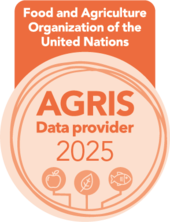Comparison between Standardized Precipitation Index (SPI) and Standardized Evapotranspiration Index (SPEI) for agricultural drought over Mantaro Valley, Peru
DOI:
https://doi.org/10.57188/manglar.2024.037Abstract
Drought is one of the main events associated to climate change that affects water supply and food productions at different locations and time (spatio-temporal) in the Peruvian Tropical Andes (PTA). Furthermore, studies evidenced that drought are causing an enormous damage to social, economic and environmental spheres. Hence, The World Meteorological Organization (WMO) has published a handbook of drought indicators and indices with the most representative methods used in the world to assess drought events, but each index has a different advantage since the requested variable and scope are different. In that sense, this study aims to compare the Standardized Precipitation Index (SPI) and Standardized Evapotranspiration Index (SPEI) for agricultural drought under spatio-temporal consideration in the PTA, Mantaro Valley. Firstly, SPI is based on precipitation data, effectively distinguishes between wet and dry seasons. Secondly, SPEI takes into consideration precipitation and temperature changes which leads to an understanding of global warming. SPI and SPEI were applied to six different meteorological stations within Mantaro Valley with data between 1990-2021 under a spatio-temporal approach. The results mainly show that, 30% reveal characteristics of drought. Also, SPEI was able to identify greater drought events by +-3% for all meteorological stations and applying the Cohen's Kappa statistical analysis, substantial but not perfect agreement can be evidenced with a no agreement value of +-40%. Finally, it is recommended to continue analyzing floods and frosts in the last decades with the purpose of clearly understand the climatic development for an informed decision making in the water management and agricultural activities.
Downloads
References
Arana Ruedas, D. P. R., & Moggiano, N. (2023). ENSO Influence on Agricultural Drought Identified by SPEI Assessment in the Peruvian Tropical Andes, Mantaro Valley. Manglar, 20(2), 157–167. https://doi.org/10.57188/manglar.2023.018
Arana Ruedas, D. P. R., Soto Guerra, L., Popli, K., & Gambo Madaki, S. (2023). Spatio-Temporal Drought Assessment Using Standardized Precipitation Evapotranspiration Index (SPEI) over Mantaro Valley, Peru. Revista de Investigaciones Altoandinas - Journal of High Andean Research, 25(3), 159–170. https://doi.org/10.18271/ria.2023.525
Bağçaci, S. Ç., Yucel, I., Duzenli, E., & Yilmaz, M. T. (2021). Intercomparison of the expected change in the temperature and the precipitation retrieved from CMIP6 and CMIP5 climate projections: A Mediterranean hot spot case, Turkey. Atmospheric Research, 256, 105576. https://doi.org/10.1016/J.ATMOSRES.2021.105576
Beguería, S., Vicente-Serrano, S. M., Reig, F., & Latorre, B. (2014). Standardized precipitation evapotranspiration index (SPEI) revisited: parameter fitting, evapotranspiration models, tools, datasets and drought monitoring. International Journal of Climatology, 34(10), 3001–3023. https://doi.org/10.1002/JOC.3887
Correa, S. W., Mello, C. R., Chou, S. C., Curi, N., & Norton, L. D. (2016). Soil erosion risk associated with climate change at Mantaro River basin, Peruvian Andes. CATENA, 147, 110–124. https://doi.org/10.1016/J.CATENA.2016.07.003
Drobinski, P., Silva, N. Da, Panthou, G., Bastin, S., Muller, C., Ahrens, B., Borga, M., Conte, D., Fosser, G., Giorgi, F., Güttler, I., Kotroni, V., Li, L., Morin, E., Önol, B., Quintana-Segui, P., Romera, R., & Torma, C. Z. (2018). Scaling precipitation extremes with temperature in the Mediterranean: past climate assessment and projection in anthropogenic scenarios. Climate Dynamics, 51(3), 1237–1257. https://doi.org/10.1007/s00382-016-3083-x
Eccel, E., & Tomozeiu, R. (2015). Increasing resolution of climate assessment and projection of temperature and precipitation in an alpine area. Theoretical and Applied Climatology, 120(3–4), 479–493. https://doi.org/10.1007/S00704-014-1181-4
Espinosa, L. A., Portela, M. M., & Rodrigues, R. (2019). Spatio-temporal variability of droughts over past 80 years in Madeira Island. Journal of Hydrology: Regional Studies, 25. https://doi.org/10.1016/j.ejrh.2019.100623
Gumus, V. (2023). Evaluating the effect of the SPI and SPEI methods on drought monitoring over Turkey. Journal of Hydrology, 626, 130386. https://doi.org/10.1016/J.JHYDROL.2023.130386
Gwet, K. L. (2008). Computing inter-rater reliability and its variance in the presence of high agreement. British Journal of Mathematical and Statistical Psychology, 61(1), 29–48. https://doi.org/10.1348/000711006X126600
Hayes, M., Svoboda, M., Wall, N., & Widhalm, M. (2011). The Lincoln Declaration on Drought Indices: Universal Meteorological Drought Index Recommended. Bulletin of the American Meteorological Society, 92(4), 485–488. https://doi.org/10.1175/2010BAMS3103.1
IPCC. (2023). AR6 Synthesis Report: Climate Change 2023. https://www.ipcc.ch/report/ar6/syr/
Laimighofer, J., & Laaha, G. (2022). How standard are standardized drought indices? Uncertainty components for the SPI & SPEI case. Journal of Hydrology, 613. https://doi.org/10.1016/j.jhydrol.2022.128385
Leng, G., Tang, Q., & Rayburg, S. (2015). Climate change impacts on meteorological, agricultural and hydrological droughts in China. Global and Planetary Change, 126, 23–34. https://doi.org/10.1016/j.gloplacha.2015.01.003
Lorenzo, M. N., Pereira, H., Alvarez, I., & Dias, J. M. (2024). Standardized Precipitation Index (SPI) evolution over the Iberian Peninsula during the 21st century. In Atmospheric Research (Vol. 297). Elsevier Ltd. https://doi.org/10.1016/j.atmosres.2023.107132
Lozano-Povis, A., Alvarez-Montalván, C. E., & Moggiano, N. (2021). Climate change in the Andes and its impact on agriculture: a systematic review. Scientia Agropecuaria, 12(1), 101–108. https://doi.org/10.17268/SCI.AGROPECU.2021.012
Marcos Valiente, Ó. (2001). Sequía: Definiciones, tipologías y métodos de cuantificación. In Investigaciones Geográficas, no (Vol. 26).
Meseguer-Ruiz, O., Serrano-Notivoli, R., Aránguiz-Acuña, A., Fuentealba, M., Nuñez-Hidalgo, I., Sarricolea, P., & Garreaud, R. (2024). Comparing SPI and SPEI to detect different precipitation and temperature regimes in Chile throughout the last four decades. Atmospheric Research, 297. https://doi.org/10.1016/j.atmosres.2023.107085
Mohammed, S., Alsafadi, K., Enaruvbe, G. O., Bashir, B., Elbeltagi, A., Széles, A., Alsalman, A., & Harsanyi, E. (2022). Assessing the impacts of agricultural drought (SPI/SPEI) on maize and wheat yields across Hungary. Scientific Reports, 12(1). https://doi.org/10.1038/s41598-022-12799-w
Mousavi, R., Johnson, D., Kroebel, R., & Byrne, J. (2023). Analysis of historical drought conditions based on SPI and SPEI at various timescales in the South Saskatchewan River Watershed, Alberta, Canada. Theoretical and Applied Climatology, 153(1–2), 873–887. https://doi.org/10.1007/s00704-023-04495-0
Mupepi, O., & Matsa, M. M. (2023). A combination of vegetation condition index, standardized precipitation index and human observation in monitoring spatio-temporal dynamics of drought. A case of Zvishavane District in Zimbabwe. Environmental Development, 45, 100802. https://doi.org/10.1016/J.ENVDEV.2023.100802
Nam, W.-H., Hayes, M. J., Wilhite, D. A., & Svoboda, M. D. (2015). Projection of Temporal Trends on Drought Characteristics using the Standardized Precipitation Evapotranspiration Index (SPEI) in South Korea. Journal of The Korean Society of Agricultural Engineers, 57(1), 37–45. https://doi.org/10.5389/ksae.2015.57.1.037
NCAR. (2024). Standardized Precipitation Index (SPI) | Climate Data Guide. https://climatedataguide.ucar.edu/climate-data/standardized-precipitation-index-spi
Nwayor, I. J., & Robeson, S. M. (2024). Exploring the relationship between SPI and SPEI in a warming world. Theoretical and Applied Climatology, 155(4), 2559–2569. https://doi.org/10.1007/s00704-023-04764-y
SENAMHI. (2020). Mapa Climático del Perú. https://www.senamhi.gob.pe/?p=mapa-climatico-del-peru
Sharma, A., & Goyal, M. K. (2020). Assessment of the changes in precipitation and temperature in Teesta River basin in Indian Himalayan Region under climate change. Atmospheric Research, 231, 104670. https://doi.org/10.1016/J.ATMOSRES.2019.104670
Singh, S., Kumar, A., & Kumara, S. (2023). Assessment of Drought in Meteorological Data Using SPI and SPEI Indicators for Sustaining Agricultural Productivity in the Agra Division of Uttar Pradesh, India. 285–303. https://doi.org/10.1007/978-3-031-36825-7_19
Tefera, A. S., Ayoade, J. O., & Bello, N. J. (2019). Comparative analyses of SPI and SPEI as drought assessment tools in Tigray Region, Northern Ethiopia. SN Applied Sciences, 1(10). https://doi.org/10.1007/s42452-019-1326-2
Tirivarombo, S., Osupile, D., & Eliasson, P. (2018). Drought monitoring and analysis: Standardised Precipitation Evapotranspiration Index (SPEI) and Standardised Precipitation Index (SPI). Physics and Chemistry of the Earth, Parts A/B/C, 106, 1–10. https://doi.org/10.1016/J.PCE.2018.07.001
Vergni, L., & Todisco, F. (2011). Spatio-temporal variability of precipitation, temperature and agricultural drought indices in Central Italy. Agricultural and Forest Meteorology, 151(3), 301–313. https://doi.org/10.1016/j.agrformet.2010.11.005
Vicente-Serrano, S. M., Beguería, S., & López-Moreno, J. I. (2010). A multiscalar drought index sensitive to global warming: The standardized precipitation evapotranspiration index. Journal of Climate, 23(7), 1696–1718. https://doi.org/10.1175/2009JCLI2909.1
Vorobevskii, I., Kronenberg, R., & Bernhofer, C. (2022). Linking different drought types in a small catchment from a statistical perspective – Case study of the Wernersbach catchment, Germany. Journal of Hydrology X, 15, 100122. https://doi.org/10.1016/j.hydroa.2022.100122
Wagesho, N., & Claire, M. (2016). Analysis of Rainfall Intensity-Duration-Frequency Relationship for Rwanda. Journal of Water Resource and Protection, 08(07), 706–723. https://doi.org/10.4236/JWARP.2016.87058
Wang, Y., Zhou, B., Qin, D., Wu, J., Gao, R., & Song, L. (2017). Changes in mean and extreme temperature and precipitation over the arid region of northwestern China: Observation and projection. Advances in Atmospheric Sciences, 34(3), 289–305. https://doi.org/10.1007/S00376-016-6160-5
WMO. (2016). Handbook of Drought Indicators and Indices. World Meteorological Organization (WMO), Geneva. 52 p.
Yang, C., Tuo, Y., Ma, J., & Zhang, D. (2019). Spatial and Temporal Evolution Characteristics of Drought in Yunnan Province from 1969 to 2018 Based on SPI/SPEI. Water, Air, and Soil Pollution, 230(11). https://doi.org/10.1007/s11270-019-4287-6
Yu, H., Wang, L., Zhang, J., & Chen, Y. (2023). A global drought-aridity index: The spatiotemporal standardized precipitation evapotranspiration index. Ecological Indicators, 153. https://doi.org/10.1016/j.ecolind.2023.110484
Zhu, Z., Duan, W., Zou, S., Zeng, Z., Chen, Y., Feng, M., Qin, J., & Liu, Y. (2024). Spatiotemporal characteristics of meteorological drought events in 34 major global river basins during 1901–2021. Science of The Total Environment, 921, 170913. https://doi.org/10.1016/J.SCITOTENV.2024.170913
Zubieta, R., Saavedra, M., Silva, Y., & Giráldez, L. (2017). Spatial analysis and temporal trends of daily precipitation concentration in the Mantaro river basin: Central Andes of Peru. Stochastic Environmental Research and Risk Assessment, 31(6), 1305–1318. https://doi.org/10.1007/S00477-016-1235-5
Downloads
Published
Issue
Section
License
Copyright (c) 2024 Víctor Antonio Ángeles Clemente, Del Piero R. Arana-Ruedas, Steve Dann Camargo Hinostroza, Oketta Onafuje

This work is licensed under a Creative Commons Attribution 4.0 International License.

Manglar is an open access journal distributed under the terms and conditions of Creative Commons Attribution 4.0 International license









